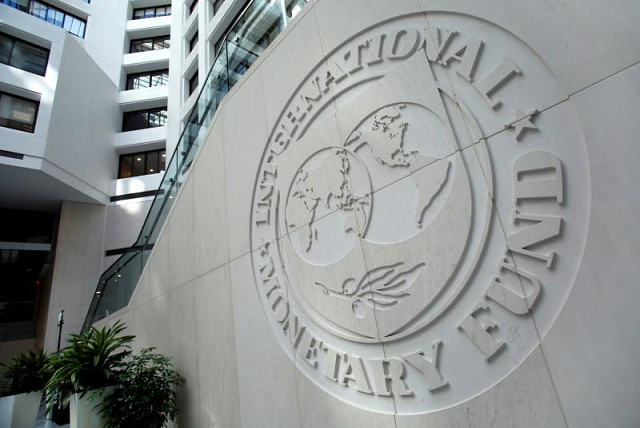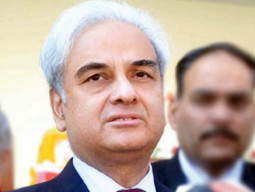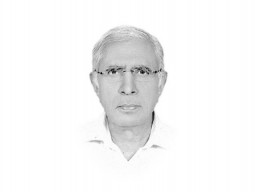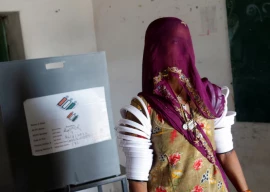
Low foreign exchange reserves are cited as the main indicator of poor performance. But is the economic situation in Pakistan really that bleak and if so, what can be done?
Let’s look at the state of economy from a neutral perspective. This is what the Asian Development Bank (ADB) said in its April 2018 report, “Pakistan’s economy is projected to maintain strong growth in fiscal year 2018 as power supply in the country improves, manufacturing and crop harvests strengthen, and consumption expenditure and investments rise.”
The situation, therefore, is not as bleak as it is made out to be. Admittedly, there is a problem with the external sector, mostly due to poor performance of exports.
According to the same ADB report, exports have declined by an average of 2.6% annually or from 11.2% of gross domestic product (GDP) in 2007 to 7.2% in 2017, far below the 28% average in developing Asia.
US senators 'concerned' over possible IMF loan to Pakistan
There is no doubt that the energy crisis and terrorism-related issues had a major role in the gradual loss of export markets. Unfortunately, these issues were accentuated by the country’s tax policy.
When the PML N government assumed power in 2013, it was expected that in keeping with its past traditions, it may opt for opening up the economy by lowering taxes and integrating it with the region and the rest of the world.
Unfortunately, it was not to be so. Instead, it increased taxes on international trade. Now Pakistan collects about 47% of its taxes from international trade as compared to global average of 7.64%. This is the highest percentage in the world.
What the new government needs to avoid is the trade and tariff policies of the previous two governments. While there is a need to avoid wasteful imports such as those of furnace oil worth billions for which LNG is a much cheaper substitute, most other imports are essential for a smooth running of the economy.
There is no doubt that Pakistan will need to borrow to stabilise its balance of payments position. With Pakistan’s low credit rating, even at the best of times, it is not easy to raise more than $2-3 billion from international markets.
IMF dismisses talk of denying Pakistan bailout
Even if we managed to get loans, they carry high interest rates. Therefore, the only option is to swallow the pride and approach the IMF once again. Owing to active opposition of the Trump administration, it may be harder to get fresh loans, but every effort must be made.
It might be argued that the IMF puts humiliating conditions and we should avoid going to it at all costs. While it is true that the IMF programmes usually follow a carrot and stick formula, the conditions are almost universal in nature.
It asks that wasteful expenditures be reduced by lowering subsidies, getting rid of inefficient state-operated enterprises and at the same time improving revenues. Often such austerity measures are unpopular but as with individuals, there is no choice but to live within available means.
Pakistan needs IMF support, Mulk warned
Critics also claim that once a country gets addicted to IMF loans, it just keeps on wanting more and never gets out of the cycle of borrowing. While it may be true for some countries such as Argentina and Greece, there are many that borrowed once or twice but did not have to go back to the IMF. India is one example. It had to borrow in 1992 to address balance of payments problems on tough conditions, but since then it did not have to go back.
Iceland, Ireland and many other economies, which deeply suffered from the 2008 financial crisis, successfully paid their loans and are now among the top performing economies in the world.
Therefore, it is not the IMF loan but the policies that a country follows after stabilisation that determine its economic well-being.
A new way forward would be to get rid of import substitution policies and embark on export-led growth. This would mean a paradigm change in the current tariff and trade policies.
Pakistan would have to reduce reliance on taxes on international trade. It would also have to modernise its trading procedures so that it is not ranked at the bottom but at least amongst the top 100 countries.
The writer served as Pakistan’s ambassador to the WTO from 2002 to 2008
Published in The Express Tribune, August 13th, 2018.
Like Business on Facebook, follow @TribuneBiz on Twitter to stay informed and join in the conversation.





















-(1)1714116455-0/Heeramandireactions-(2)-(1)1714116455-0-270x192.webp)











1714024018-0/ModiLara-(1)1714024018-0-270x192.webp)









COMMENTS (2)
Comments are moderated and generally will be posted if they are on-topic and not abusive.
For more information, please see our Comments FAQ